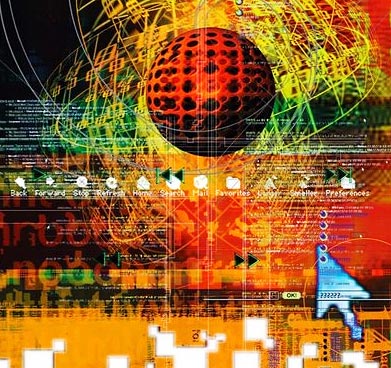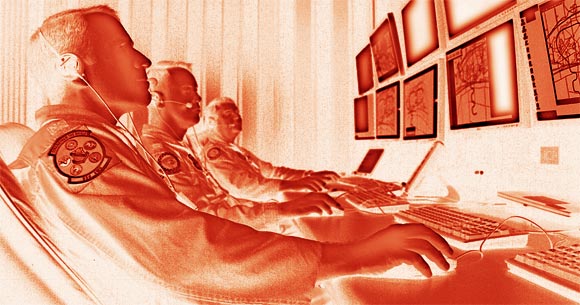Virtual Reality is a computer simulated realm that can be experienced in simulator machines that give you a full bodied experience or just a simpler program on your personal computer. Virtual reality is becoming a staple in modern education, training and entertainment as a more efficient and affordable tool.
So, first let’s discuss what is happening now in the field of virtual reality and later we’ll discuss the future of virtual reality.
Current Virtual Reality
Virtual reality’s roots arguably began back in 1965 by means of the “ultimate display” that was created by Ivan Sutherland. Then the data glove was introduced in 1977 that allowed a human body to interact in the digital world.
Next, “Tron” was the first computer generated movie in 1982. All the way up to holodecks from Star Trek and the “Matrix.” There are three types of technology that allows us to experience virtual reality in the 21st century.
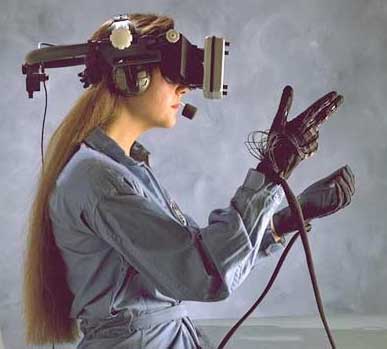
Virtual Reality Today
They are, desktop VR, Video Mapping, and Immersive VR. Desktop is the most basic, like peering into another dimension and using the mouse and keyboard to interact through the screen. Whereas Immersive virtual reality is a full immersion experience where the user wears a helmet or goggles that project the video, audio is pumped into the room, the computer tracks the movements of the head, arms, legs, etc. This immersive mode allows you to use your entire body to experience the realities of another digital dimension.
Virtual Reality has its Pros and Cons. The positives lie with training, for example, pilot training for commercial pilots and fighter pilots. These examples save hundreds of thousands of dollars and provide the pilots with the added time needed to become fully certified.
Virtual reality can also be used for long distance communication, education, and even medical training. However, there are cons based on social distancing, false sense of reality and more which can be managed through proper education and use of the technology, but must be noted and accounted for.
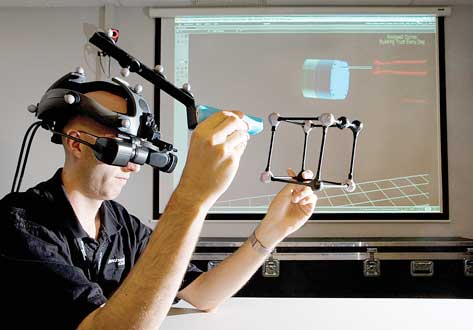
Virtual Reality in Science Lab
There are many examples of virtual reality rides from Disneyland attractions to online video games. A realistic virtual reality realm exists online with no monthly subscription, it is called Second Life where you can design your own human, start a business, own property and socially interact with hundreds of thousands of other people.
If you are interested in fantasy realms you can always check World of Warcraft, EverQuest, or Star Wars: The Old Republic which is set for release in the fall of 2012. These realms offer you an out of body experience in a fantasy where flying, magic, and aliens rule so that you may take your entertainment to a whole new level.
Future Virtual Reality
Currently there are many hurdles to having a memorable virtual reality experience. Computer processing power, bandwidth and image resolution are just three hurdles that will need breakthrough technology in order to overcome these limitations.
But fear not as the power of future computers will come to the rescue providing thousands of times more processing speed than is currently available. The computers of tomorrow will make the computers of today look like mainframes.
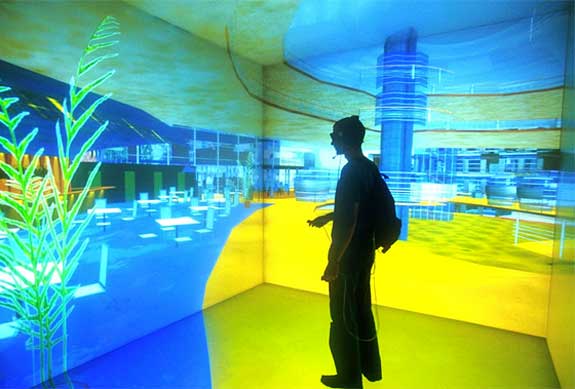
Future Virtual Reality
Some of the uses of future virtual reality will be education, training, psychotherapy, medical, sports and interpersonal communication. In regard to future virtual reality and education, imagine taking a virtual trip to Rome to study Italian with native speakers rather than depending upon Rosetta Stone software or in-classroom or online studies.
In regard to training, the possibilities are endless. As previously mentioned pilot training would be one option. Other options would include military training such as parachuting, enemy combat, weapons training and hand-to-hand combat. Suppose however, you’re an astronaut going to Mars. You may want virtual experience in flying a spacecraft, experiencing zero gravity and training for tasks upon arrival at your destination.
Now with the combination of psychotherapy and virtual reality there are a couple of possibilities that jump to mind. One is distance learning and interaction with your psychotherapist which is more effective than a phone consultation or even a web cam. Another possibility is your psychotherapist helping you with a phobia or PTSD (post-traumatic stress disorder).
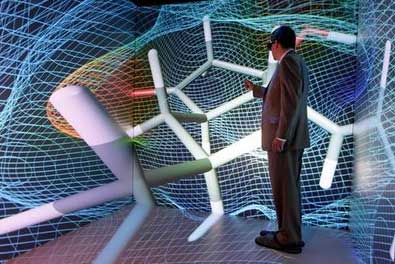
Holodeck
The treatment for each of these would be enhanced by future virtual reality since the goal of each is desensitization. For phobias, snakes, spiders or other objects of anxiety can be introduced slowly and safely as an interim step towards real life confrontation.
Future virtual reality may also help those with PTSD to re-enact the past trauma in a safe environment in a made up world where a person can also be desensitized to what had happened. This will be helpful to war veterans, victim or childhood or adult sexual or physical abuse or a whole host of other situations where one could be traumatized.
Medical uses of future virtual reality will be for the treatment of people with disabilities. Those who have problems with social interactions could do so safely virtually. Those undergoing physical therapy could also do so with the aid of future virtual reality to help train the mind about limbs moving in the way desired.
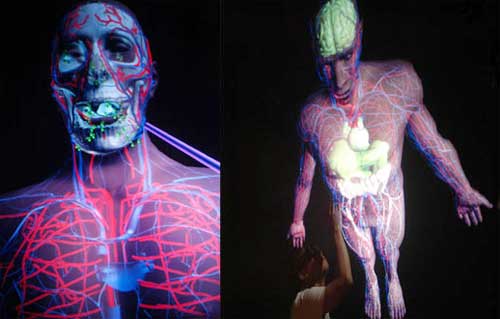
Virtual Reality in Medicine
Different studies of athletes have shown that imagining moves on the field are 80 to 85-percent as actual physical training. This means that closing one’s eyes, dreaming, meditating, doing hypnosis or simple daydreaming is almost as effective as physically doing the exercise and much more effective than those who don’t engage in these activities. So add to it the virtual reality aspect of moving and immersing oneself in realistic situations and future virtual reality will be helpful for both those engaging in physical therapy or athletes wanting to improve their game skills.
One of the last advantages of future virtual reality that I will talk about is the aid to interpersonal communication. Many people are aware of the shortcomings of talking on the phone, Facebooking, Tweeting, texting, or even webcam chats.
With future virtual reality, it will be possible for two or more people to meet in a virtual space and have a conversation. Experts have long said that 80 to 90-percent of all communication is non-verbal. Future virtual reality will help bridge this gap in that if you were to meet someone in a virtual space you could observe body language, facial expressions, hand gestures and put it all together with the content and tone of the other person’s speech.
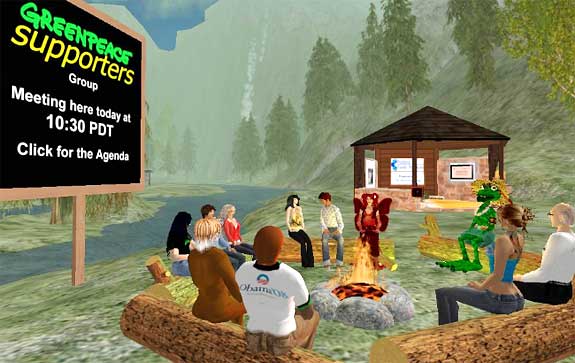
Virtual Meeting
Communication will be greatly enhanced and misunderstandings will be greatly reduced with future virtual reality. Besides friends talking with friends, heads of nations, heads of corporations and other powerful people could meet virtually.
I’ve thought of one more industry that will be helped by future virtual reality and that is the entertainment industry. Can’t get tickets to a concert or sporting event, then join the virtual crowd and enjoy yourself. There is a book-signing by your favorite author halfway around the world. Join it virtually.
Want to meet a celebrity, join a cocktail party (or your favorite bar), go to the opening of a new art gallery, see a Broadway play? In the future, virtual reality will aid in all of these desires.
It will just take a little more time and technology to see this come to fruition. Patience is a virtue – or is it virtual? 🙂
